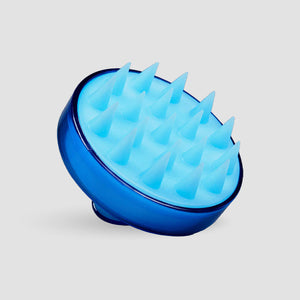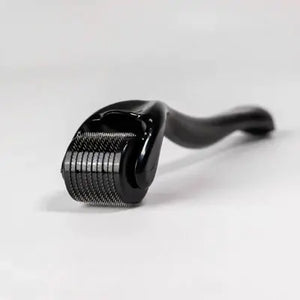
Telogen effluvium: Understanding Sudden Hair Loss
Summary
- The Cycle of Hair Growth
- What Happens if You Have Telogen Effluvium?
- Discerning Telogen Effluvium from Other Types of Hair Loss
- Telogen Effluvium Treatments
- What Does Elithair Recommend for Treating Telogen Effluvium
The Cycle of Hair Growth
The 3 Phases of Hair Follicles
To understand sudden hair loss, it's important to be aware of the hair cycle that follicles undergo.
- The majority of the hairs on your head, between 80% and 90%, are in the anagen or growth phase at any point in time.
- After growth, the hair enters the transitional catagen phase, where the follicles begin to shrink and hair parts from the bottom of the follicle. This is the shortest stage of the hair growth cycle, only lasting around 10 days and with just around 5% of hairs being in this phase.
- Then, in the resting telogen stage, the hair follicles stop growing while new hair begins to form in its place. It is usually not possible to notice many hairs falling out in the telogen phase, as only 10-15% of the hair follicles are in this phase of the hair growth cycle.
However, if there is a shock to the system, the ratios are reversed between resting and growth. Up to 70% of anagen hairs are pushed into the resting stage as the number of telogen hairs increase, which results in hair shedding.
Connection to Nail Growth: How Do You Know When Telogen Effluvium is Ending?
As the hair loss happens suddenly and often due to some abrupt incident, it can be difficult to foresee. Particularly since it tends to occur between 2 and 4 months after the event that caused the hair loss.
However, nail and hair growth are subject to the same conditions, meaning it's possible to track the appearance of telogen effluvium hair loss by checking what's known as the beau line. This groove is caused by a disruption to the nail growth cycle, which can coincide with telogen effluvium symptoms. If it is for example at the midpoint of the nail you can track the shock to 2.5 months ago since it takes fingernails 5 months to grow completely.
What Happens If You Have Telogen Effluvium?
Hair Loss: How Long Does Telogen Effluvium Last?
This type of alopecia can be localised to one area or diffuse. It may first be noticed as thinning hair on the top of the scalp. Usually, the hairline is not affected, and only some scalp hair is lost due to the continued presence of telogen hair follicles for just a few months. In severe cases, hair fall may occur in other areas of the body, such as the eyebrows.
Chronic Telogen Effluvium
With telogen effluvium men are less likely to experience it as a chronic condition. For some people, the hair loss can continue for longer periods of time. This can often happen to women with a thicker hair structure and long hair, since its loss is more noticeable than for women with thinner hair. Often women undergoing menopause can experience acute telogen effluvium lasting years due to a hormonal imbalance.
Discerning Telogen Effluvium from Other Types of Hair Loss
Anagen Effluvium
As the hair loss can continue for a period of time, it is possible to confuse it with other types of hair loss. Anagen effluvium is another kind of sudden hair loss, but one which tends to develop a lot faster and can result in a complete loss of hair on the scalp.
This is most often caused by medications that work to fight cancer. The difference can be noticed where the fallen telogen hairs usually have a small bulb of keratin at the end of the root, but here the anagen hairs are the ones that fall out which have a tapered root end.
Androgenetic Alopecia
This form of hair loss can be preceded by telogen effluvium, as the percentage of telogen hair follicles are increased due to genetics. Over time, though, the hairline is affected during the hair loss as it recedes, and androgenetic alopecia can be predicted by checking family history for patterns of hair loss.
Alopecia Areata
Alopecia areata can be characterised by the patchy circles of hair loss that is caused by the autoimmune condition. Hair will eventually regrow in most cases, but you can be prone to flare-ups where the hair will fall out again.
Telogen Effluvium Treatments
Understanding the Causes: How to Stop Telogen Effluvium
The cause for the sudden loss of hair allows for an understanding of the appropriate treatment for telogen effluvium. Stress is one of the more common reasons for telogen effluvium, so it's important to recognise where the stress is originating from and tackle it. Crash dieting can also cause hair loss and can be remedies with the right balance of vitamins and nutrients.
It can be due to a nutrient deficiency as well, such as vitamin D, so getting medical advice and a blood test would be recommended. Certain life events can also contribute to hair loss, such as childbirth and a traumatic incident, in these cases the hair usually returns on its own.
Hair Products
There are some hair products which can help to bridge the gap between hair loss and telogen effluvium regrowth. Minoxidil can be useful in this case for growing hair, as it only continues while the product is continuously applied. However, there can be some negative side effects, such as eczema or irritation to the scalp. It may be advisable then to go with a more natural product in order to reduce the possibility of negative reactions.
What Does Elithair Recommend for Treating Telogen Effluvium?
If you’re looking for a more natural solution to aid in dealing with telogen effluvium, Dr. Balwi Biotin & Keratin supplement is an organic solution to achieving strong hair. The growth-promoting properties of the nutrients help to prevent and reduce hair loss while stimulating the hair follicles, making for stronger and fuller hair.




















